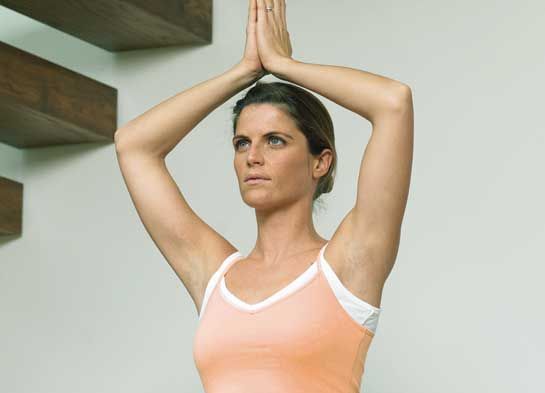
BY KAREN ASP
Being green has never been more in vogue—or more in demand. Consider, for example, that according to a recent study, 82 percent of Americans say they are buying green products and services, even though they may cost more.
Want to capitalize on that trend? Make your personal training business more environmentally friendly and, while improving the health of your clients and the earth, you might also boost your bottom line.
The Pros of Going Green
No matter what level you take it to, going green makes sense, especially for fitness professionals. “Becoming green is an extension of what fitness is all about,” says Rachel Devlin, general manager of the Green Fitness Studio in Brooklyn, N.Y. “We’re helping individuals get healthy so it only makes sense to help make their environment and the planet as healthy as possible.”
To that end, the Green Fitness Studio has implemented numerous practices that point toward the green message and living healthier because of it. For instance, it uses natural cleaning supplies and launders gym towels in energy-efficient machines with eco-friendly detergents. The floors in the fitness studio are made of bamboo, a sustainable product, while floors in the workout area are made of recycled rubber. All of the gym equipment is either remanufactured or self-powered. Water in the fountains and showers is filtered at the source, and when members join, they receive a stainless steel bottle, as plastic bottles are discouraged. The studio uses compact fluorescent lights, does its billing and contracts on a paperless system, and features eco-friendly touch-screen computers, which it says saves up to 48 percent power when compared with HDTV, Devlin says. Even the juice bar is environmentally friendly, using ingredients that are local, organic and sustainable.
But the real highlight is the living roof, a 2,000-square-foot area covered with sod. Not only does the roof cut energy output to cool the gym, it also serves as an outdoor studio for yoga classes during warmer weather. “Clients are able to bring elements of nature into their workout, which helps them see the importance of being green,” Devlin says.
Reducing operating costs is yet another benefit to becoming more environmentally friendly, especially if you own your own studio. At the Green Microgym in Portland, Ore., for example, owner Adam Boesel estimates that the initiatives he has undertaken have cut his carbon emissions by 60 percent, which has lowered both water and electricity costs. For instance, just having a power strip on every TV (there are three in the gym) that members turn on and off has cut 10 percent to 20 percent off the electricity bill.
What else has he done to reduce his expenses? The gym’s Energy Star–labeled fans have their own switch so members can operate them. When the gym is empty, lights, TVs and fans are off. The treadmills in Boesel’s gym use 30 percent less electricity than regular models, and other cardio equipment like ellipticals and stationary bikes actually produce energy as people pedal so that the more clients sweat, the more energy they produce for the facility.
In the end, you might find that you can literally cash in on being greener, as it could bring you new clients. For example, Ryan Kollock, CEO and owner of Code Green Fitness in Laguna Beach, Calif., recently signed one client who was deciding between Code Green Fitness and three other gyms. Even though Kollock was more expensive than the other gyms, the man chose Code Green Fitness. “Being more of a green business swayed his decision my way,” Kollock says, adding that he has no doubt his green mission has brought other clients to him as well.
Why It Isn’t Always Easy Going Green
Unfortunately, greening a business doesn’t come without its obstacles. If you are building a new facility, you might face dilemmas about how green you want to go. Take building materials, for instance. “If you use a green building material that has to be shipped from far away,” says Devlin, “you have to decide whether that will negate the environmental savings.”
And even though you are promoting a green message, you might have to make compromises. That was something the Green Fitness Studio ran into when it first decided to serve its smoothies in real glasses. Yet after realizing that clients don’t want to take time to drink a smoothie on site, but would rather take it with them, the studio found biodegradable cups. “We want to bring these green initiatives to clients without complicating people’s lifestyles,” Devlin says.
Implementing Green Practices in Your Business
Fortunately, you don’t have to overhaul your entire business to go green, especially if you own a studio that wasn’t built green, as tearing it down would have a negative impact on the environment, or you operate out of facilities that you don’t have control over. “Doing little things can make a huge difference,” Kollock says.
Whether you own a studio or club, operate from an existing club, or work out of clients’ homes, consider putting these 10 strategies to work:

1. Promote recycling. Place recycling bins around your studio, especially near trash bins. Then recycle as much as you can in your office, paying attention to paper, cardboard, newspapers and beverage bottles.
2. Discourage the use of plastic bottles. Encourage your clients to sip out of BPA-free bottles instead of plastic water bottles. You might even give them one as an incentive when they hire you or join your club.

3. Go paperless. Switch to doing billing and contracts online. Also, if you don’t have a Web site, establish one so you can veer toward online marketing. If you need to print materials like business cards or brochures, use recycled paper and environmentally friendly ink.
4. Design eco-friendly fitness programs. Keep the environment in mind when designing training programs for your clients, Kollock says. For instance, could your clients walk or run outside instead of using a treadmill? Can you challenge them to sneak in more cardio by driving less? Maybe they can bike to the library or run to the YMCA. You also can encourage clients to do bodyweight exercises instead of buying the latest piece of equipment.

5. Reduce electrical use. Always turn off lights in areas that aren’t being used, and if possible, replace lights with energy-efficient compact fluorescent lights. The International Health, Racquet & Sportsclub Association also recommends installing large ceiling fans to cut down on air conditioning needs. And unplug any equipment that is not being used. Another interesting fact: Treadmills use the most electricity when set at a zero incline; as soon as you add an incline, you reduce the amount of energy used by as much as half, which is something to consider when working with clients, Boesel says.

6. Opt for sustainable foods. As much as possible, eat organic or locally sourced foods. That goes, too, for any food items that you sell or give away as incentives.
7. Sport organic duds. Even if you don’t own a studio where you can sell organic apparel, you can still wear them. And fortunately, organic apparel choices are rapidly expanding as brands like Prana, lululemon, Green Apple Active and Athleta continue to increase their organic offerings.
8. Cut the chemicals. Reduce your clients’ exposure to chemicals as much as possible by switching to all-natural cleaners with non-toxic compounds. If you’re painting, choose low- or no-volatile organic compounds (VOC) paints and coatings, and if you’re replacing carpets, consider buying Green Label carpet, which identifies carpet with low VOC.
9. Buy used or recycled equipment. Whether you’re in the market for a new piece of cardio equipment or a strength-training tool, check Web sites like eBay or CraigsList, or sporting goods stores like Play It Again Sports, before you buy new, Kollock says.
10. Donate used goods. Before you throw anything away, think about whether somebody else might be able to use it. You can always sell equipment through eBay or Play It Again Sports. Or consider donating equipment and products. For instance, old tennis balls might go to local schools, used towels might benefit a local animal shelter or used yoga mats could go to recycleyourmat.com.
Once you have initiated green practices into your business, tell your clients what you’re doing—it may give you an edge over other fitness professionals or clubs in your area—and offer tips they can follow for living a “greener” lifestyle. “Many people are still learning about how to live greener, which is why it’s important to offer practical tips and strategies they can use in their own lives,” Devlin says.
In the end, you might find that these green practices help keep you in business longer. “Building a sustainable business means that you’ll be around for the long haul, even during a slowed-down economy,” Boesel says.
_________________________________________________________________
Karen Asp, freelance journalist and ACE-certified Fitness Professional, is a contributing editor for Woman’s Day. She also writes regularly for numerous other publications, including Men’s Fitness, Women’s Health, Self, Shape, Fitness, Prevention and Runner’s World.